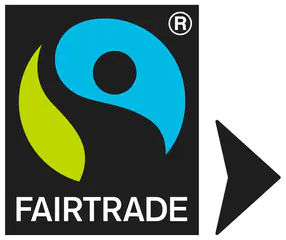The Fairtrade Label
Searching for products made with high environmental and social standards? Look out for the FAIRTRADE Mark. Several are available, find out about each below and make a fair choice!


This page gives you an overview of the Fairtrade labels. You may also be interested in related topics such as how Fairtrade certification works, assuring integrity, traceability or products and ingredients. You can also find information about the latest Fairtrade Pilots.
Look out for these marks
The FAIRTRADE Mark is the most recognised ethical label globally. When you buy products with any of the FAIRTRADE Marks, you support farmers and workers as they improve their lives and their communities. Products bearing these Marks meet the internationally agreed social, environmental and economic Fairtrade Standards.


The FAIRTRADE Mark
When you see this mark on a product, all its ingredients have met the Fairtrade standards. They are also fully traceable (kept separate from non-certified products) from farm to shelf. Most often, this mark can be found on single ingredient products like coffee, rice, or bananas.


If you see the FAIRTRADE Mark with an arrow, look on the back of the packaging to learn more about the ingredients and sourcing method!
This mark is used on products made of several ingredients, like biscuits or ice cream, where all the ingredients that are available under Fairtrade conditions have been certified. For instance, the cocoa, sugar and vanilla of your favourite chocolate bar. The minimum total Fairtrade content is 20 percent but many companies go above and beyond that. You will find the relevant information on the back of the pack.
It is also used on cocoa, sugar, fruit juice and tea that have been sourced using mass balance.
Specific Product Marks

The FAIRTRADE Cotton Mark indicates that a product is made with raw cotton that has been fairly produced and traded, which is directly traceable through all stages of production and separated from non-Fairtrade cotton during processing. A blended fabric can carry this label if 100 percent of the cotton used in the blend is Fairtrade certified.

The FAIRTRADE Gold Mark stands for the fair extraction and trading of all the gold used in a piece of jewellery, as well as the gold’s physical traceability throughout the supply chain. This certification may also be indicated by an Fairtrade label engraved in the final piece of jewellery.

Cosmetic products with Fairtrade ingredients carry the FAIRTRADE Mark alongside the information “contains Fairtrade ingredients”. All ingredients of this product that are available as Fairtrade have been sourced in accordance with the Fairtrade Standards.

Garments and other textiles with this mark comply with the Fairtrade Textile Standard which mandates ethical production and trade of a textile / piece of clothing along the whole supply chain.
Fairtrade Sourced Ingredient Mark

These white marks indicate that the specific ingredient named on the tab has been sourced as Fairtrade, such as Fairtrade cocoa in a breakfast cereal.
This is different from the black FAIRTRADE Mark, which signifies that all the ingredients that are available as Fairtrade are Fairtrade certified. If the ingredient was sourced using mass balance an additional arrow in a tab indicates this and points to more information on the back of the package. Ingredients with the Ingredient Mark are certified according to the same Fairtrade Standards as the ingredients of products with the black FAIRTRADE mark, and producers still receive all the same benefits.
Fairtrade Sourcing Programme Mark

This trio of Marks originated in 2014 and were replaced in 2018 by the Fairtrade Sourced Ingredient Mark and model above. The two sets may have coexisted for a couple of years on your supermarket shelves after the FSI launch in 2018, but the Fairtrade Sourcing Program Marks have been superseded by the Fairtrade Sourced Ingredient Mark.
The right mix: Composite Products
Many Fairtrade products are self-contained – think coffee beans or bananas. For products that combine ingredients we have special rules that enable businesses to include Fairtrade ingredients in their recipes, so Fairtrade farmers and workers benefit from increased sales opportunities.
Mixed and matched: Mass Balance
Sometimes it is not possible to keep certified and non-certified ingredients separate in the course of production. This applies more often to cocoa, sugar, fruit juices, and tea. Instead of denying farmers to sell their Fairtrade produce in such cases, Fairtrade offers a flexible approach without compromising on social and environmental standards.
Where are the Marks registered?
Fairtrades trademarks are registered in over 170 countries. All Fairtrade Marks, FSI Marks and all other individual trademarks or certification marks worldwide are registered or pending in the name of Fairtrade International.
Related topics
-
Fairtrade products and ingredients
-
How Fairtrade certification works
-
Assuring integrity in checking compliance
-
Traceability in Fairtrade supply chains
-
Fairtrade pilots
Related resources
-
Regulations of use
Interested in selling Fairtrade products?
Visit our dedicated section for businesses to find about the benefits of Fairtrade and how to get started on your sustainability journey.
Find out more